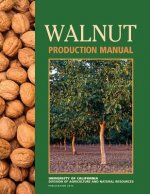
Kód: 01399862
Developments in Ionic Polymers-2. Vol.2
Autor A. D. Wilson, rosser
Ionic polymers, like elephants, are easier to recognise than to define. Several methods of classification have been attempted but none is wholly satisfactory because of the extreme diversity of ionic polymers, which range from the ... celý popis
- Jazyk:
 Angličtina
Angličtina - Väzba: Pevná
- Počet strán: 356
Nakladateľ: Springer Netherlands
- Viac informácií o knihe

91.36 €
Bežne: 91.40 €
Ušetríte 0.04 €
Dostupnosť:
50 % šanca Máme informáciu, že by titul mohol byť dostupný. Na základe vašej objednávky sa ho pokúsime do 6 týždňov zabezpečiť.
Máme informáciu, že by titul mohol byť dostupný. Na základe vašej objednávky sa ho pokúsime do 6 týždňov zabezpečiť.Prehľadáme celý svet
Mohlo by sa vám tiež páčiť
-

Baseband Analog Circuits for Software Defined Radio
139.60 € -

Religious Voices in Public Places
252.78 € -

Tschinku im Gastland
15.35 € -10 %
Darujte túto knihu ešte dnes
- Objednajte knihu a vyberte Zaslať ako darček.
- Obratom obdržíte darovací poukaz na knihu, ktorý môžete ihneď odovzdať obdarovanému.
- Knihu zašleme na adresu obdarovaného, o nič sa nestaráte.
Informovať o naskladnení knihy
Zadajte do formulára e-mailovú adresu a akonáhle knihu naskladníme, zašleme vám o tom správu. Postrážime všetko za vás.
Viac informácií o knihe Developments in Ionic Polymers-2. Vol.2
Nákupom získate 226 bodov
 Anotácia knihy
Anotácia knihy
Ionic polymers, like elephants, are easier to recognise than to define. Several methods of classification have been attempted but none is wholly satisfactory because of the extreme diversity of ionic polymers, which range from the organic, water-soluble polyelectrolytes, through hydrogels and ionomer carboxylate rubbers, to the almost infusible inorganic silicate minerals. For this reason, a general classification is not only difficult, but has minimal utility. However, there are some characteristics of these materials that should be highlighted. The role of counterions is the significant one. These ions, either singly or as clusters, take part in the formation of ionic bonds which have a varying structural role. Often they act as crosslinks, but in the halato-polymers the ionic bonds form an integral part of the polymer backbone itself. Conversely, in polymers contain ing covalent crosslinks, such as the ion-exchange resins, the coun terions have virtually no structural role to play, since they dwell in cage-like structures without affecting the crosslinking, and are readily exchanged. They are, perhaps, best described as ion-containing polymers rather than structural ionic polymers. Another crucial factor is the role of water in ionic polymers. The presence of ionic bonds means that there is a tendency for these materials to interact with water. Where the ionic polymer contains a high proportion of ionic units, it acts as a hydrogel and may be highly soluble. Such interactions with water decrease sharply as the ionic content is reduced, though even then water can act as a plasticiser.
 Parametre knihy
Parametre knihy
Zaradenie knihy Knihy po anglicky Technology, engineering, agriculture Industrial chemistry & manufacturing technologies Industrial chemistry
91.36 €
- Celý názov: Developments in Ionic Polymers-2. Vol.2
- Autor: A. D. Wilson, rosser
- Jazyk:
 Angličtina
Angličtina - Väzba: Pevná
- Počet strán: 356
- EAN: 9780853344193
- ID: 01399862
- Nakladateľ: Springer Netherlands
- Hmotnosť: 700 g
Obľúbené z iného súdka
-

Polymer Processing
269.68 € -

Science of Ice Cream
37.07 € -

Modern Gastronomy
101.91 € -

French Patisserie
50.79 € -17 % -

Understanding Wine Technology
32.25 € -23 % -

Emperor Of Scent
12.28 € -23 % -

Vineyards, Rocks, and Soils
59.40 € -

Art of Making Fermented Sausages
17.20 € -19 % -

Malt
16.58 € -23 % -

Introduction to Perfumery
108.97 € -

How To Brew
21.29 € -18 % -

Soapmaker's Companion
18.53 € -21 % -

Craft and Science of Coffee
154.35 € -

Walnut Production Manual
68 € -

Mouthfeel
61.55 € -

Salami
123.83 € -

Art of Beef Cutting - A Meat Professional's Guide to Butchering and Merchandising
40.55 € -20 % -

Undiscovered Self
24.47 € -

Altbier
16.17 € -1 % -

Principles of Brewing Science
30.72 € -2 % -

Note-by-Note Cooking
28.87 € -4 % -

Formulation and Preparation of Cosmetics, Fragrances and Flavors
91.97 € -

New Brewing Lager Beer
17.81 € -16 % -

Microbiome, Immunity, Digestive Health and Nutrition
184.87 € -

Formulas, Ingredients and Production of Cosmetics
277.26 € -

Coulson and Richardson's Chemical Engineering
118.09 € -10 % -

Voigt's Pharmaceutical Technology
161.83 € -

Introduction to Chemical Engineering - Tools for day and Tomorrow, 5th Edition
92.18 € -

Organic Chemistry of Drug Design and Drug Action
103.95 € -6 % -

Oktoberfest, Vienna, Marzen
11.26 € -16 % -

Designing Plastic Parts for Assembly
166.54 € -

Pharmaceutical Competitive Intelligence for the Regulatory Affairs Professional
83.37 € -

Craft Maltsters' Handbook
30.92 € -

Belgian Ale
10.13 € -22 % -

Cosmetic Creams - Development, Manufacture and Marketing of Effective Skin Care Products
175.86 € -

Continental Pilsener
13.20 € -2 % -

Designing Great Beers
20.89 € -23 % -

Amber Revolution
40.14 € -

Chromatopia
22.63 € -16 % -

Natural Soap Book
13.92 € -15 % -

Cosmeceuticals and Cosmetic Ingredients
252.37 € -

Injection Mold Design Engineering
139.80 € -7 % -

Colour
9 € -23 % -

Brewing
39.94 € -

Pigment Compendium
261.08 € -

Indigo
24.88 € -13 % -

Science of Chocolate
42.40 € -

Polymer Extrusion
176.99 € -

Plastics Handbook
155.99 €
Osobný odber Bratislava a 2642 dalších
Copyright ©2008-24 najlacnejsie-knihy.sk Všetky práva vyhradenéSúkromieCookies


 21 miliónov titulov
21 miliónov titulov Vrátenie do mesiaca
Vrátenie do mesiaca 02/210 210 99 (8-15.30h)
02/210 210 99 (8-15.30h)